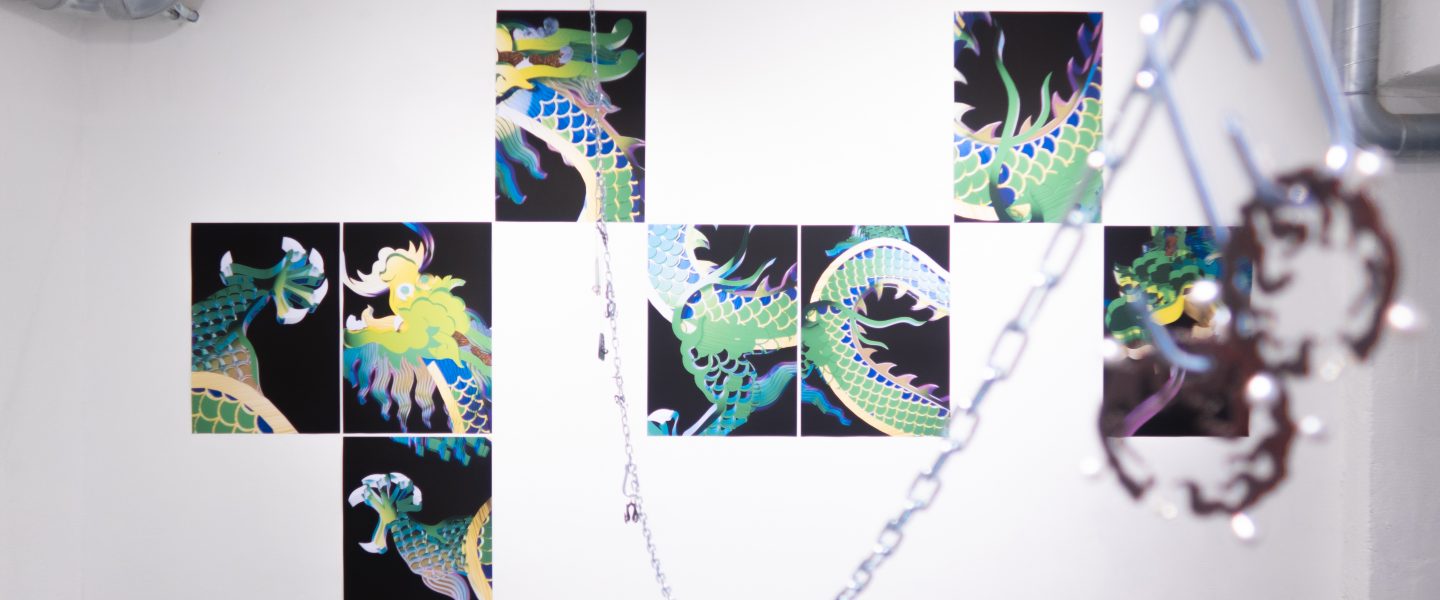
Hansel Tai, Flag of China, 2020. Photo: Hansel Tai
“Neo-China arrives from the future. It’s only the End of the World”
Hansel Tai’s exhibition in Vent space is a truly Neo-Chinese experience, but probably not like something you would expect.
During the few days in September, Vent Space project room is occupied by immensely pleasing to the eye exhibit of Hansel Tai’s works. Just upon entering the small space, a beautiful Neo-East Asian world opens itself for the visitor. This utopia is sharp, pierced, glossy and pretty. Even before getting a moment to connect with Hansel’s art, one can feel the presence of the artist’s sensibility. This sensibility is cold, but pleasant, strange, but in some ways familiar, queer and extremely chinese.
Once you find yourself between Tai’s jewelry pieces hanging from the ceiling on chains, you get to experience the new China. Tai is working with jade, a material with which probably all Chinese people have a warm personal connection. It is not hard for a European to picture the traditional religious and mythological objects carved from this sacred and pure material. But Tai’s jade, although just as chinese, is far from traditional – it is shaped in strong edgy forms and teleports your cognition to a contemporary queer world, where piercings play a sexy role of semiotic meaning.

Tai goes on by playing around with flags – flags of China, flags of China-s, flags of “others”. With a series of posters, the artist tells us his story about the Yellow Dragon Flag, the first flag of China. Hansel’s story is not a traditional tale about dragons, but a utopian visualisation of Chinese past and future through one dragon, and I believe that this dragon of the future is an intriguing digital creature whose presence is at the first glance hard to grasp. Tai then proceeds to chain together Chinas and “other” Chinas. Piece named Flag of Others seems to deal with the emotional idea of blood connections and raises the question of ethnic identities in the contemporary world. It is about the borders of now and the borders of the future.

All of this is accompanied with and tied together by a video installation (collaboration with Yuan Y.C.F.) – a truly vivid meditation on exploration the post-internet space in which virtual and real are fused into a mix of mythological and futuristic, somatic and materialistic, while the sound of it pleasantly follows you through the whole exhibition.

I think there is a great chance to meet Hansel when visiting the Eden of the East and even if he is not actually there, you will definitely feel him watching over you in the room.
In a sense there is a feeling that Hansel Tai’s work is the materialisation of everything he feels is missing in today’s China (wherever it is for you), missing in Tai’s China. And it is beautiful.
Anita Kodanik is doing her BA at Art History and Visual Culture in EKA.
